Lichen ecology, growth, pathogens
Back to: Lichen Natural History Index
Lichen ecology, growth, pathogens Back to: Lichen Natural History Index |
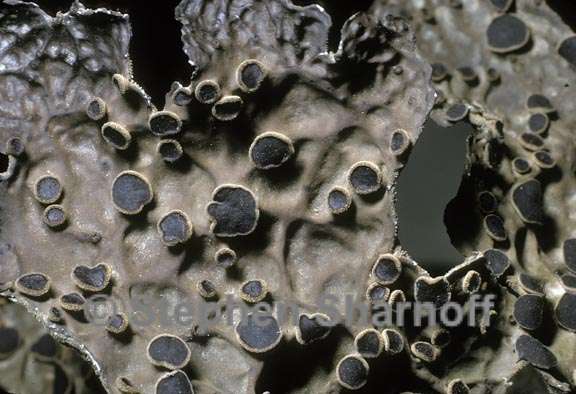 Lobaria anthraspis, dry |
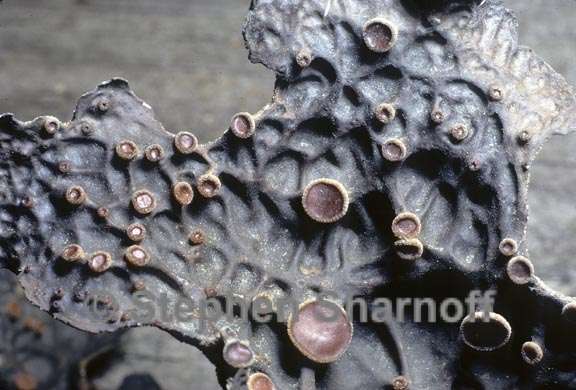 Lobaria anthraspis, damp |
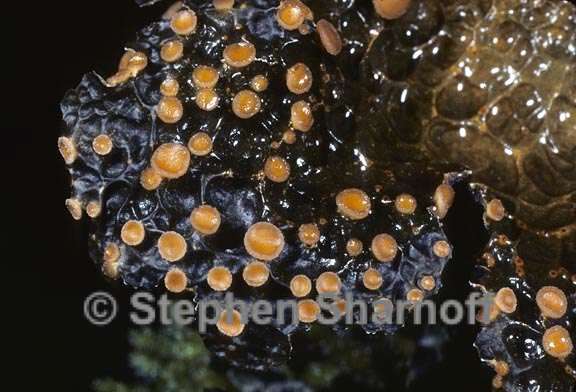 Lobaria anthraspis, wet |
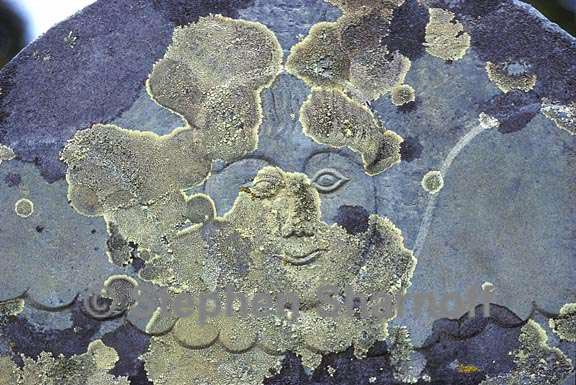 Lichens on a gravestone in 1983 |
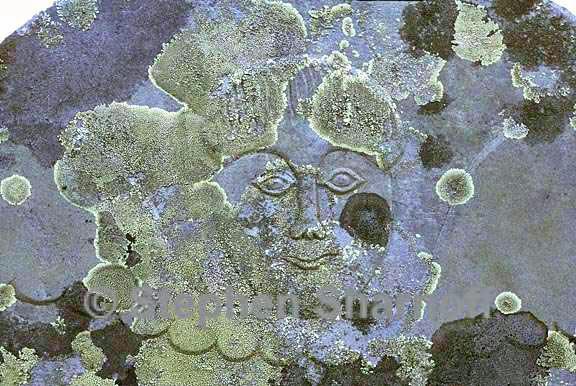 Lichens on a gravestone in 1990 |
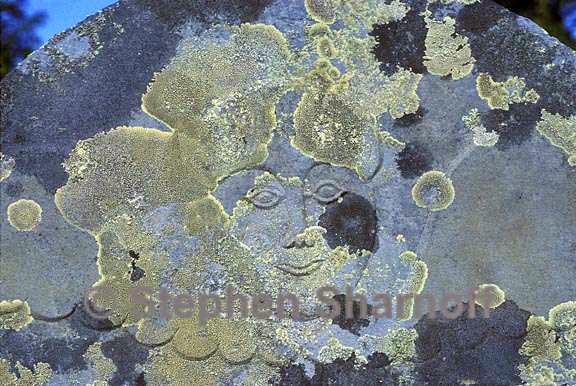 Lichens on a gravestone in 1994 |
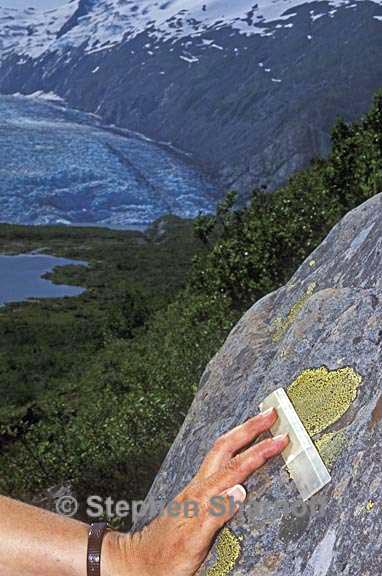 Measuring growth 1 Near the Portage Glacier, Alaska |
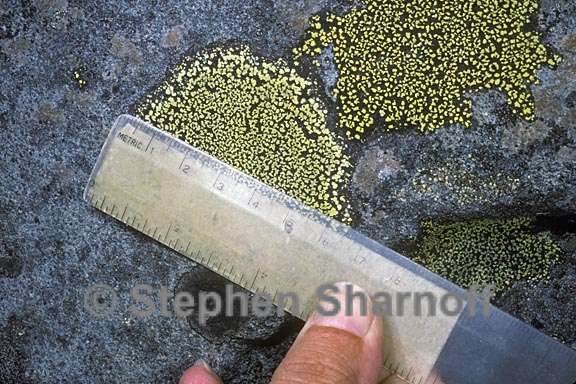 Measuring growth 2 Near the Portage Glacier, Alaska |
 This gravestone has a copper wire embedded in the stone which inhibits the growth of the gray lichen in the areas below it. Haida Gwaii (Queen Charlotte Islands) British Columbia |
 Lichens have been scraped off of this gravestone in Dennis, Massachusetts, leaving behind ghostly imprints where they etched the stone. Image 1. |
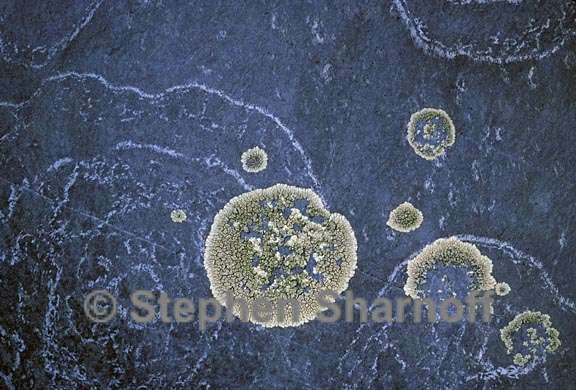 Same as above, Image 2. |
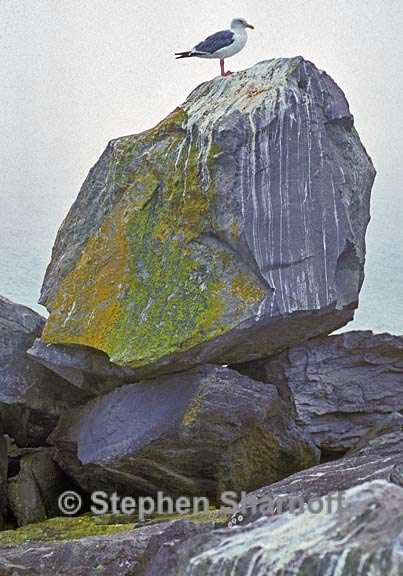 Lichens thrive in the nutrient-rich runoff from this bird perch on a coastal rock. |
 A "packrat latrine" in southern British Columbia, where rings of lichen grow in the presence of the nutrients left by the animals. |
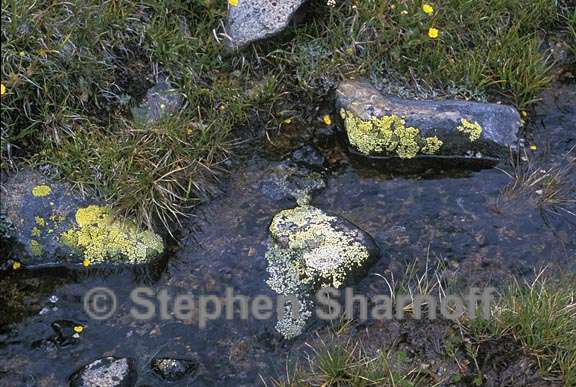 Many lichens are aquatic, or semi-aquatic, such as these thalli of Rhizocarpon growing by a mountain stream in the Sierra Nevada, California. |
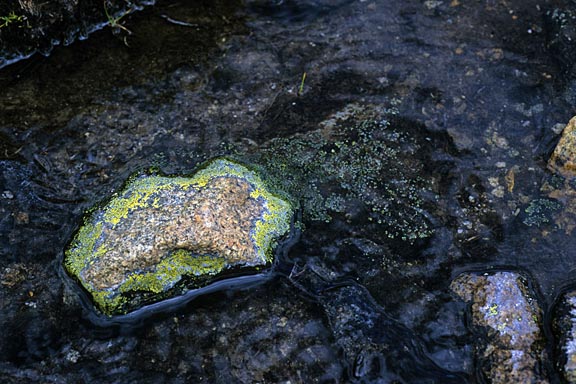 Here one can see that the Rhizocarpon is growing only in a zone right around the fluctuating waterline of the stream, so it's sometimes dry, sometimes immersed. |
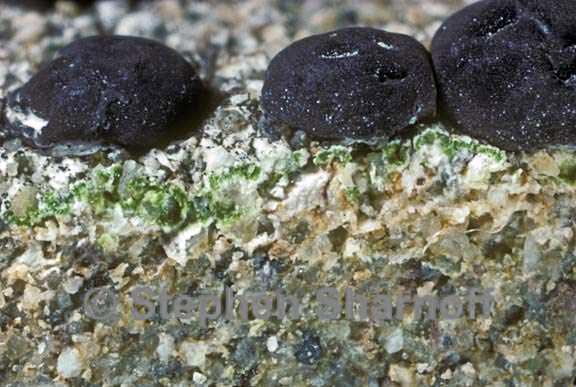 This endolitihic lichen, probably Lecidea laboriosa, is growing partly inside the sandstone, with only the black apothecia visible on the surface. This section reveals the green algal layer just under the surface of the rock, and a bit of white medulla. |
 The retreating Mendenhall Glacier has left a zone of bare rock close to the ice where not even lichens have begun to grow. Image 1 From near Juneau, Alaska. |
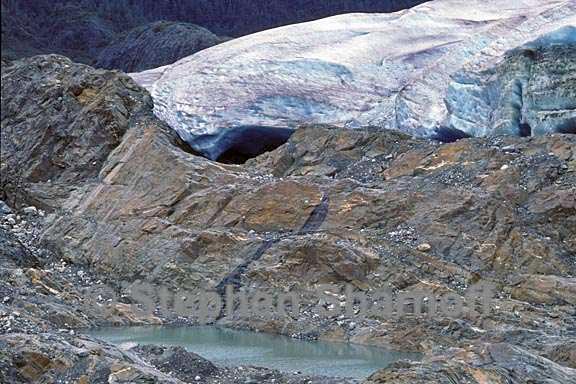 The retreating Mendenhall Glacier has left a zone of bare rock close to the ice where not even lichens have begun to grow. Image 2 From near Juneau, Alaska. |
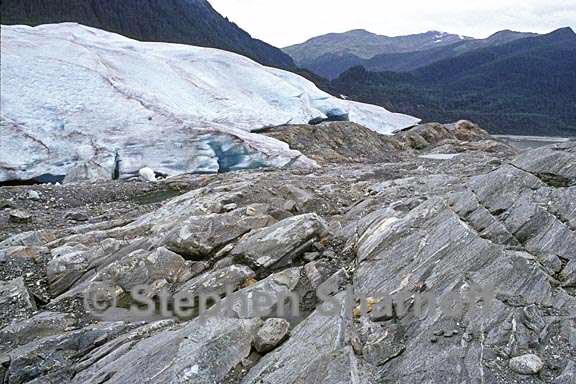 The retreating Mendenhall Glacier has left a zone of bare rock close to the ice where not even lichens have begun to grow. Image 3 From near Juneau, Alaska. |
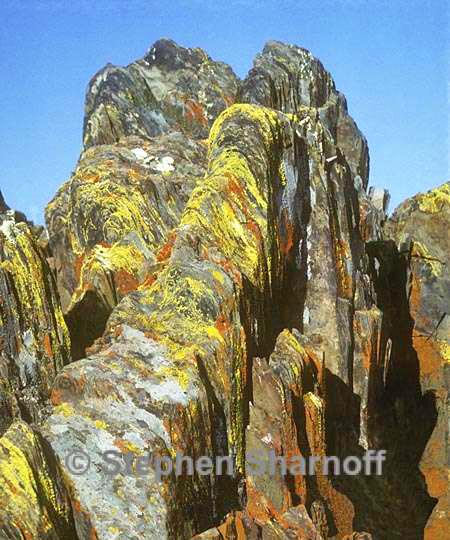 This photo was digitally manipulated to remove any trace of vascular plants. It attempts to show what a rocky landscape might have looked like in the pre-cambrian period. |
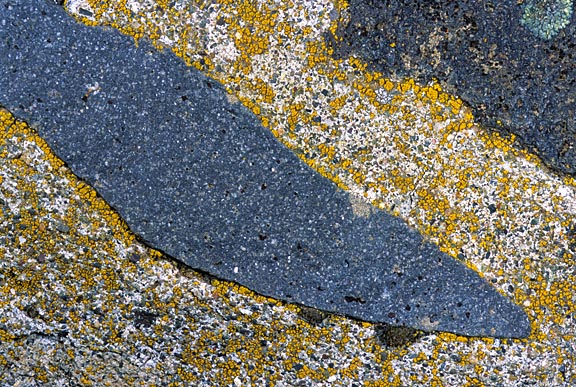 The yellow lichen, probably a species of Candelariella, is growing on this slab of sawn concrete, but not on the non-calcareous surface of a different rock that's embedded there. |
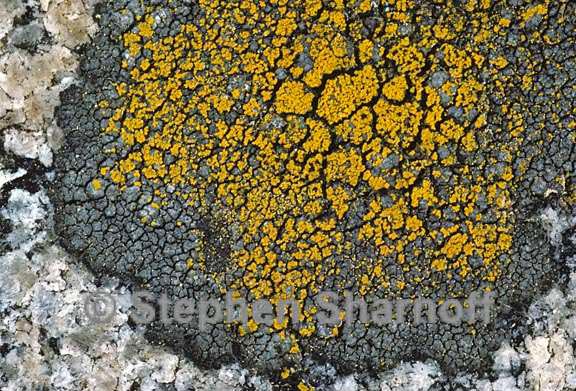 Lichens sometimes grow on other lichens. |
 Physcia caesia (right) growing on top of Rusavskia elegans, from the Sierra Nevada, California. |
 One species of lichen on this gravestone grows in the grooves, while other species grow on the outer surface. A difference in substrate texture, perhaps, or the availability of moisture? |
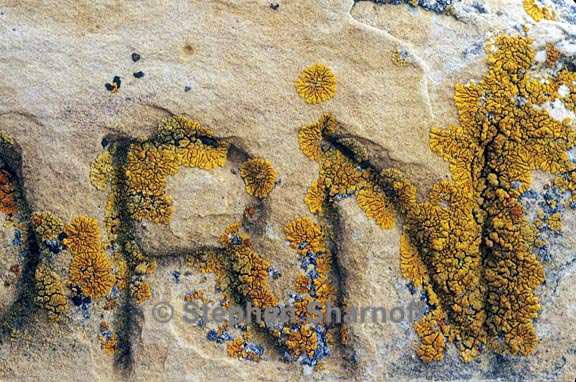 The lichens seem to prefer growing in the cracks more than the open rock, possibly because of increased moisture. |
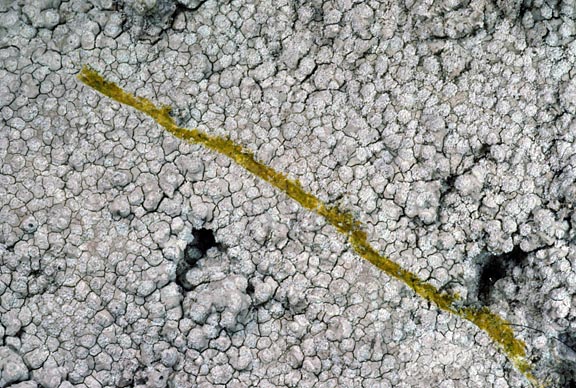 The scratch in this thallus of Dirina catalinaria shows the yellow color of its algal component, a species of Trentapohlia. |
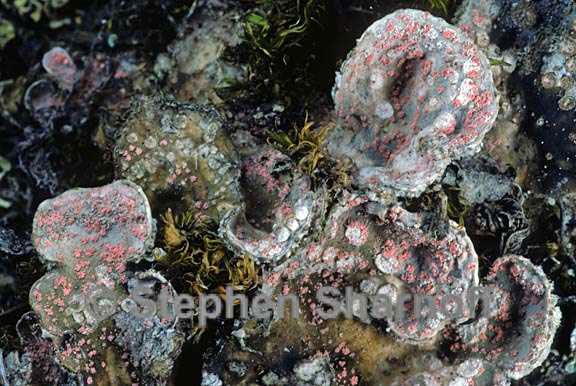 A pink fungal parasite, Illosporium carneum, growing on lobes of Peltigera didactyla. |
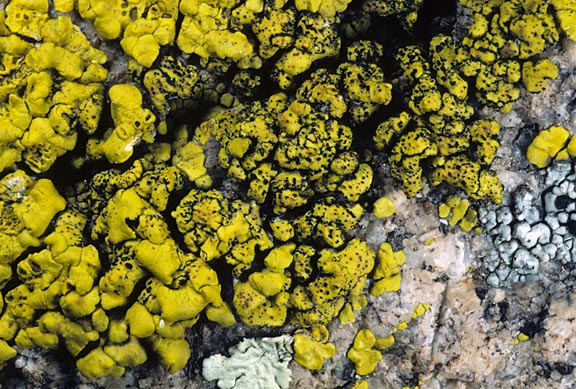 A black fungal parasite, Sphaerellothecium gowardii, growing on a "Yellow Acarospora" (or a species of Pleopsidium) in the Mojave Desert, California. |
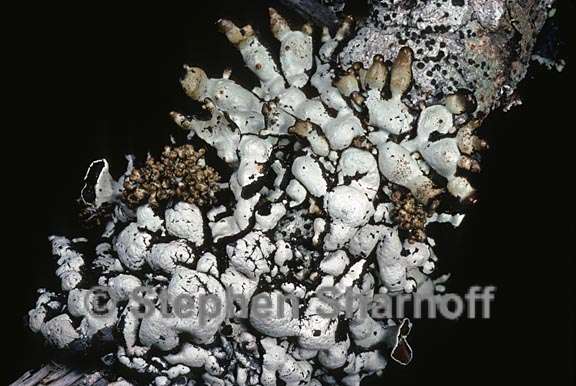 This thallus of Hypogymnia enteromorpha has a small gall on the left. |
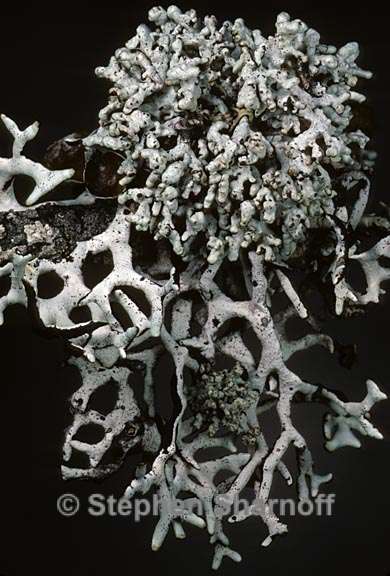 This thallus of Hypogymnia imshaugii has a large gall. |
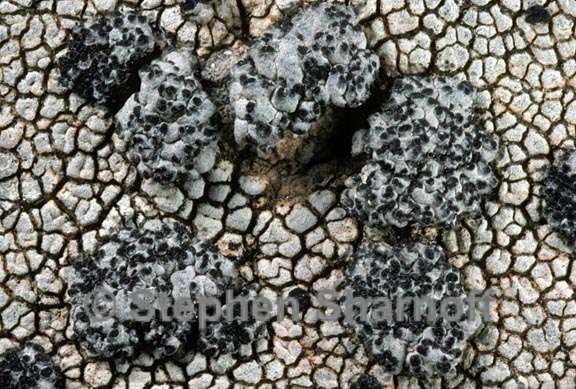 Galls on an unknown species of Aspicilia. |
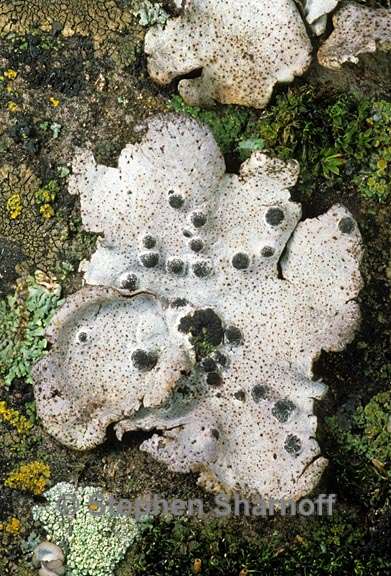 Dermatocarpon miniatum with a fungal parasite |
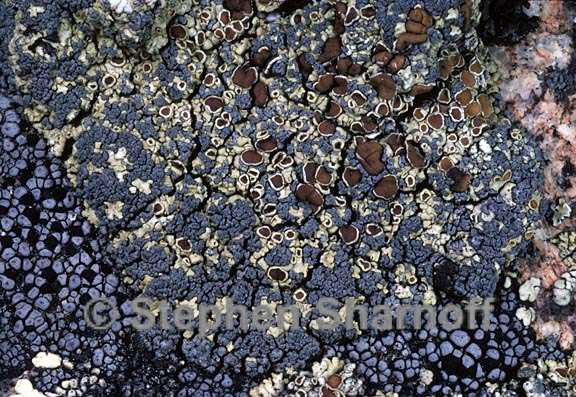 This thallus of Rhizoplaca phaedrophthalma is overgrown with a gray fungal parasite. |
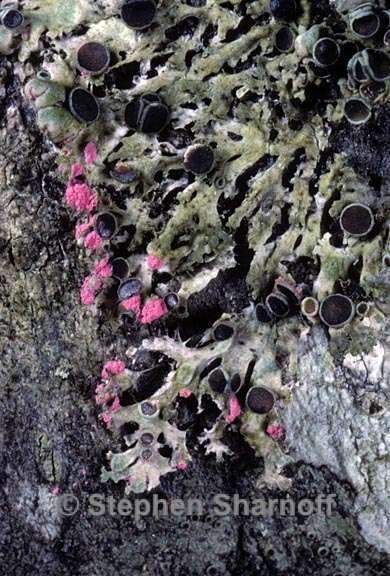 A pink fungal parasite on a species of Physcia. From Massachusetts. |
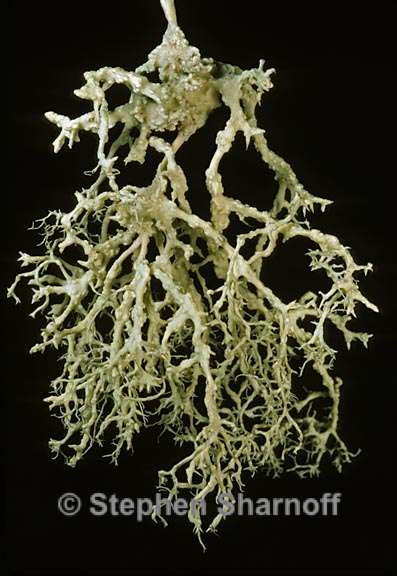 This is a very aberrant example of a Ramalina species, or possibly Alectoria sarmentosa, from Southeast Alaska. Probably a genetic mutant? For another image of this specimen, go to Alectoria sarmentosa. For images of genetic deformation in redwood trees, go to Trees and Forests group 2 in the Nature section. |
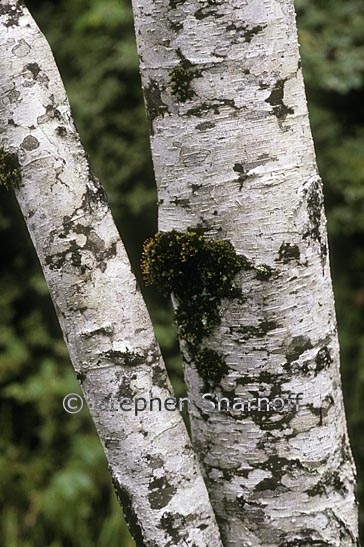 This alder tree in Sitka, Alaska, is in an area of clean air, and it's covered with a mosaic of white crustose lichens. |
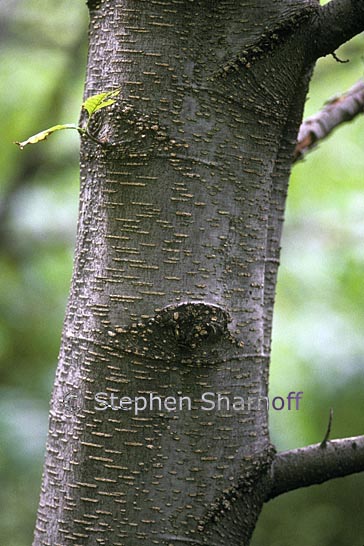 A few miles away, in the plume of smoke from a pulp mill, the air is polluted and the alders are completely bare of lichens. |
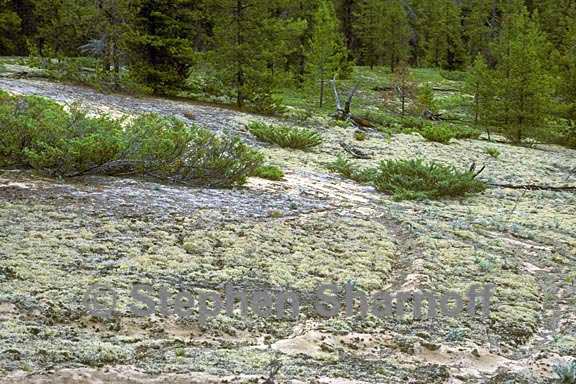 Lichen habitat is being destroyed out all over the world. These old tire tracks through the sand are being recolonized by lichens, but it wouldn't take many vehicles to make the sand completely barren. |
Back to: Lichen Natural History Index |
Go to: Lichen Spot Tests |